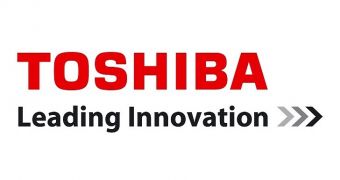For most people, CPU cache memory is an esoteric entry on specification sheets. They know it's important, and that the bigger it is, the better the CPU runs. There's a lot more to it though, as Toshiba has just revealed.
The thing is, cache is that small part of the CPU die where memory is embedded, where bits of information are stored for faster access. It means that the CPU doesn't have to go through the rest of the system and the OS for every little process.
Usually, cache memory, whether it's the first level (small but very fast), second level (big and reasonably fast), or third level (really big but not as fast as the others), is made of SRAM technology.
SRAM is volatile memory, meaning that data disappears when the PC is turned off, or power to the CPU is cut for whatever other reason. Data is stored as units of electric charge, you see.
But Toshiba has introduced a new type of cache, called MRAM. Or, more specifically, STT-MRAM, which is short for spin-transfer torque magnetoresistive random access memory.
Essentially, magnetic storage elements are used to store the bits of data, and the use of spin-aligned electrons allows for data to be modified a lot more efficiently.
There were attempts in the past to do something like this, but MRAM just wasn't fast enough, unless you sacrificed efficiency, which defeated the whole purpose (it wasted more energy than SRAM).
To solve the problem, Toshiba came up with a new circuit structure that mimics some DRAM and SRAM elements, but without leaking power.
The result was that making L2 cache memory from MRAM reduced power consumption by 80% for the level. By extension, this cuts CPU power usage by up to 60%. Really great prospects for AMD APUs, which use L2 cache and no L3 at all, unlike Intel chips.
According to Toshiba, the read times are of 4.1 nanoseconds and the write times are of 2.1 nanoseconds in MRAM. Very close to the SRAM standards. So, basically, there are no downsides.
Considering how crazy the world is about power efficiency, Toshiba may have just struck gold. Sure, the common man will probably never even know about the change in CPU architecture, but they'll definitely see the effects when battery life for tablets and laptops gains a few extra hours out of nowhere.
Now we just need to wait and see if MRAM replaces every other type of memory in a computer: DRAM (the one that goes in the (SO-)DIMM modules of a system), SSD cache, etc. Toshiba thinks it can be done.

 14 DAY TRIAL //
14 DAY TRIAL //